Surface Runoff and Drought Assessment Using Global Water Resources Datasets - from Oum Er Rbia Basin to the Moroccan Country Scale

Authors:
Precipitation and surface runoff vary strongly in space and time across Morocco. The country’s water management is primarily governed at the basin level, following a decentralized approach. However, in some cases, water is shared between basins, which increases the complexity and the potential for conflicts. The current study, conducted at Oum Er Rbia (OER) basin and Moroccan country scales, evaluates the use of novel Earth Observation (EO) products (surface soil moisture and evapotranspiration) combined with global water balance model (PCR-GLOBWB) for basin level surface runoff and country level drought assessment. At the basin level, OER River discharges considerable surface water amounts from the Middle Atlas Mountains to large reservoirs, providing water for various sectors, predominantly irrigated agriculture. The EO based PCR-GLOBWB model yielded satisfactory monthly surface runoff results validated through two OER streamflow gauges. Spatially distributed quarterly annual surface runoff matched well with the simulations achieved through more detailed Soil and Water Assessment Tool (SWAT) modeling. EO data and PCR-GLOBWB model were subsequently used to investigate country scale drought occurrence using various drought indicators (Standardized Precipitation Index (SPI), Standardized Runoff Index (SRI), and Standardized Soil Moisture Index (SSMI)). The study concludes on a foremost local to regional nature of droughts. Consistent assessment of water stress situations, from the basin to the country scale, suggest the good potential of novel EO products and global models to support demand driven water management, especially in data scarce areas.
